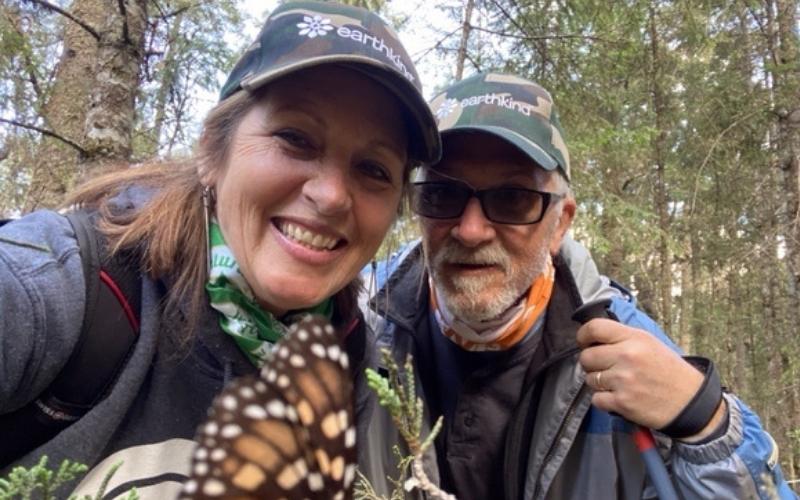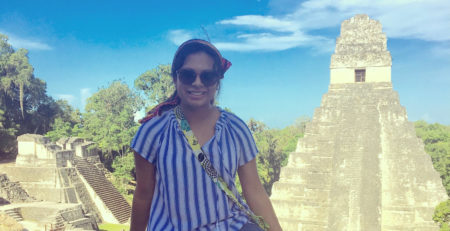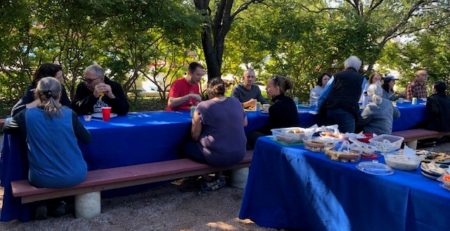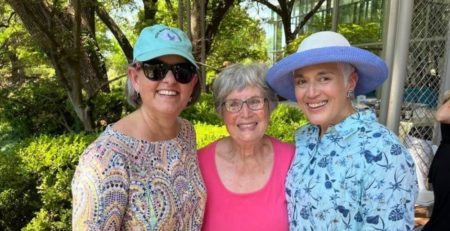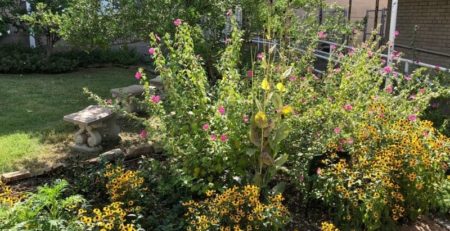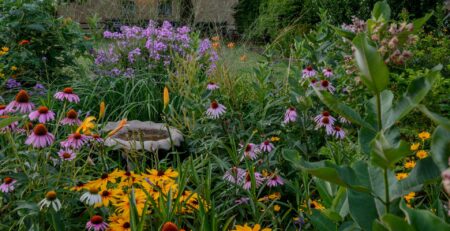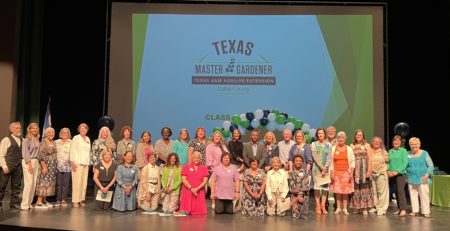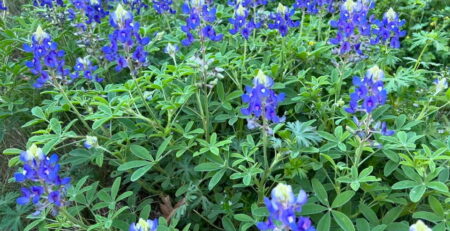Prize Winner Back From Trip of a Lifetime
Dallas County Master Gardener, Kim Aman, aka “Farmer Kim,” has returned home from a once-in-a-lifetime trip to see the overwintering habitat for the eastern population of monarch butterflies in Mexico. Kim won the trip by entering a national contest sponsored by EarthKind®, which is a plant-based pesticide company. Entrants submitted a video explaining how they teach young learners about the environment and protecting monarch butterflies.
For Kim, a former public-school teacher and seventh-generation farmer, it was a no-brainer. Kim serves as Executive Director of Grow Garden Grow, Founder of the North Texas School Garden Network, Slow Food USA Governor for Texas, SFUSA Garden Network Co-Chair, and Program Director at Moss Haven Farm where she holds the title “Farmer Kim” and integrates curriculum on the K-6 campus.
Kim not only supports schools in North Texas and across the country creating sustainable school garden programs, but also authored the American Heart Association Teaching Gardens/Whole Kids Foundation garden curriculum. On any given day, you can find Kim in the garden working alongside student farmers, whom she teaches about the land, the food they eat, pollinators, and, of course, the monarchs.
As the grand prize winner, she and her three guests traveled to Angangueo, which is located in central Mexico about two hours northwest of Mexico City. A group of thirteen people went on an eco-adventure led by two tour guides over six days. One of the guides was Dr. Court Whelan, who is an entomologist, and the other guide is an expert on the area’s history and culture.
The tour was through Natural Habitat Adventures and concentrated at the Monarch Butterfly Biosphere Reserve, which is an area of 56,259 hectares, or about 139,000 acres. However, the monarchs inhabit only a fraction of this reserve that is an old copper mining area. One hypothesis is that the monarchs are drawn here because of an internal magnetic compass in their lower wings. The magnetic pull of the earth and position of the sun guide the monarchs’ migration north and south, even when clouds block the sun.
One of the most interesting facts Kim learned on the trip is that monarchs produce four generations each year and that the fourth generation that hatches from August to September has an extended life compared to the others. This is unique in the insect and animal world.
“There are no milkweed plants in Mexico,” Kim explains, “so the monarchs stop in Texas for milkweed nourishment for their migration to Mexico.” The same is true for their migration back north in the spring.
Monarch Biosphere Reserve is supported by the World Wildlife Fund, which also serves the community by educating local residents about the importance of the monarchs. Conservation efforts focus on decreasing logging to protect the habitat.
The Biosphere Reserve, within the Trans-Mexican Volcanic Belt, was created in 1980 after the monarch discovery in 1975. The monarchs overwinter in oyamel fir forests (Abies religiosa), which grow exclusively in high elevations from 7,900-12,000 feet. Although these trees are normally evergreen, they appear orange when covered with the monarchs resting on their branches.
The town celebrates the monarchs’ return every year on November 1, also the Day of the Dead holiday in Mexico. To the locals and other visitors, the monarchs represent deceased loved ones. Kim enjoyed seeing the celebratory murals on display throughout the town at this time of year.
“One key takeaway from the trip,” said Kim, “is to ban tropical milkweed. The monarchs will eat and lay eggs on it, but it breaks down their immune systems and makes them ill.”
To learn more, Kim recommends watching a short PBS Nature Series YouTube video on the monarch migration.
